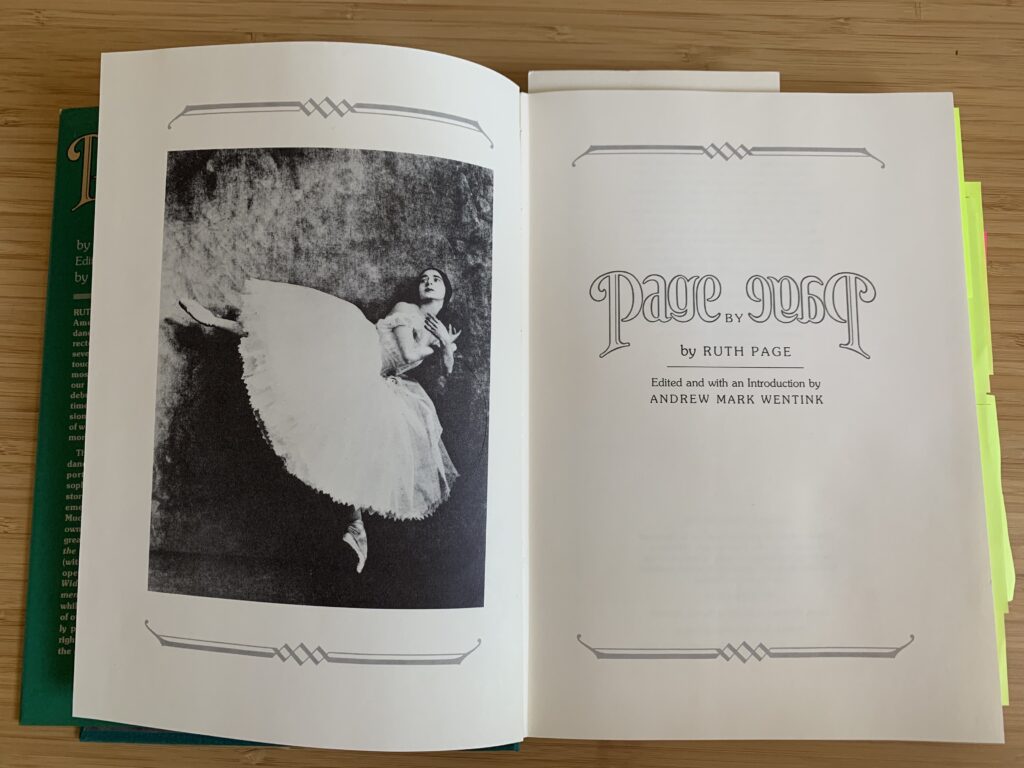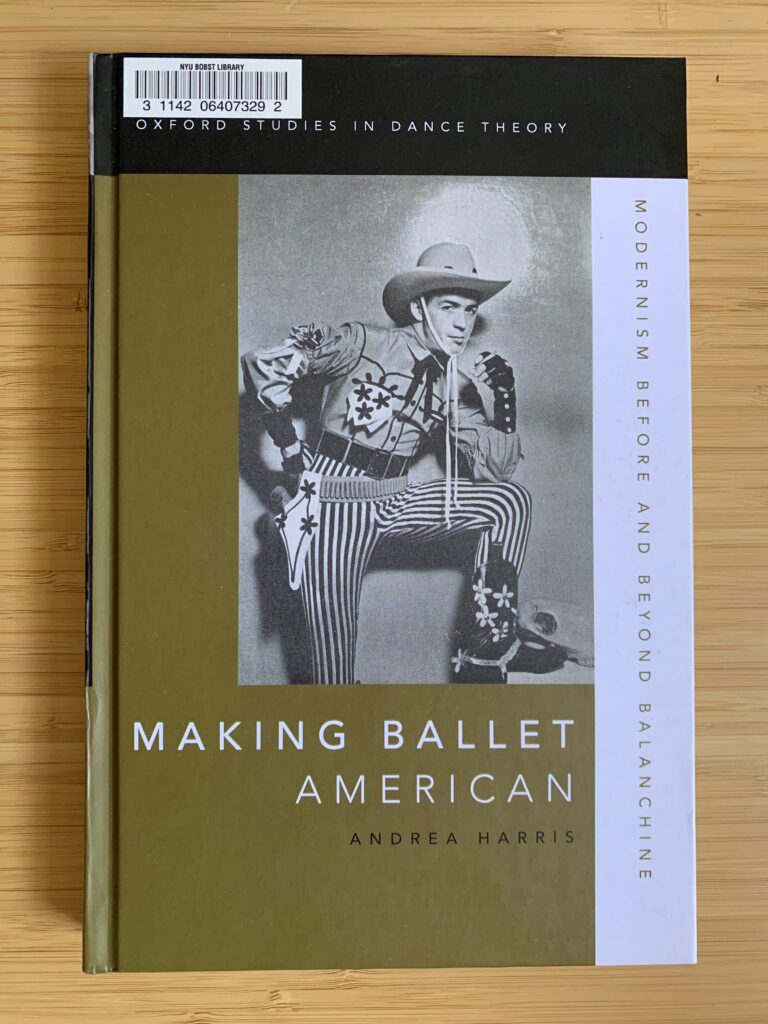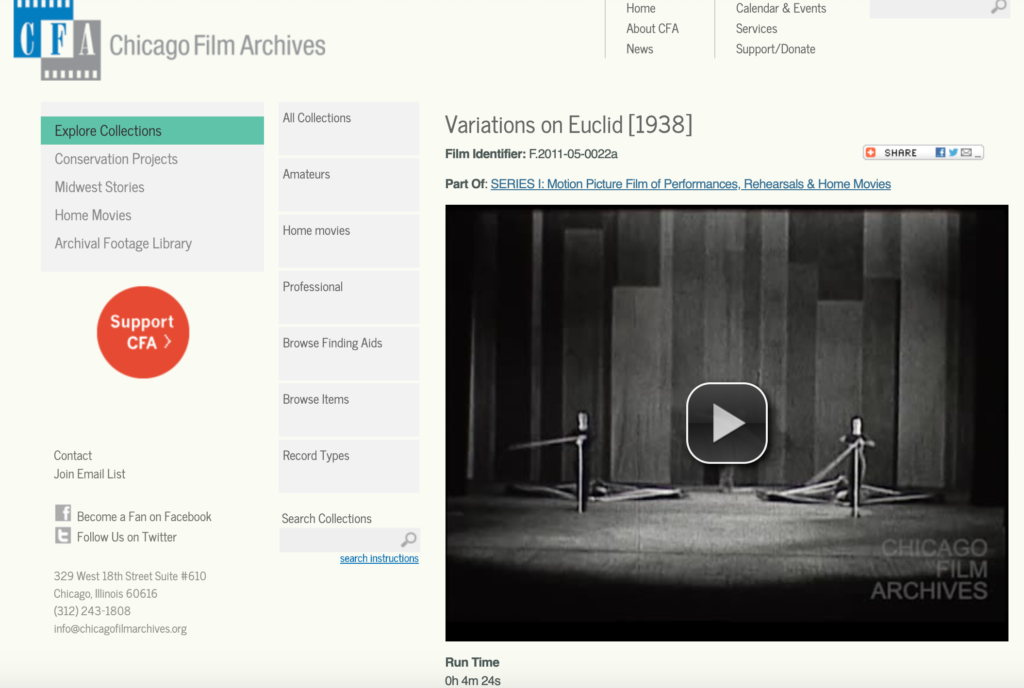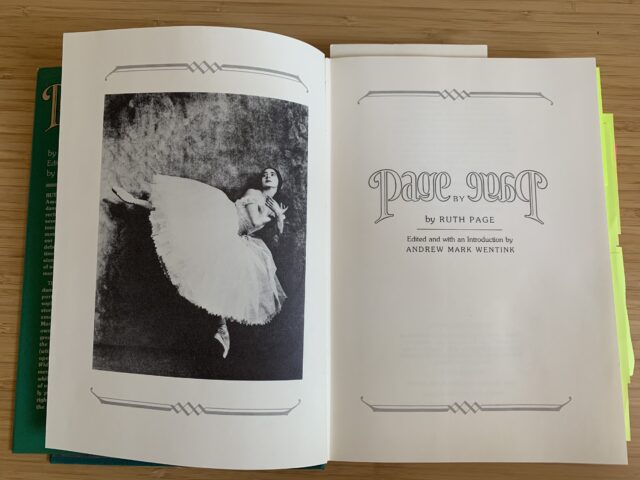My research this summer serves to support my MA thesis which focuses on the contributions of Chicago-based dancer, choreographer, artistic director, and arts advocate Ruth Page (1899-1991) to American ballet between the 1920s and 1940s. In my thesis project, I intend to test my hypothesis about Page’s career during this time period: Although her contributions have been largely overlooked in dominant cultural and scholarly conversation, Page contributed significantly to American ballet in the mid-20th century, specifically to the conversations both discursive (happening in speech and written language) and embodied (happening through the body in pieces of choreography) bubbling in the 1930s and 1940s surrounding the definition and development of an American ballet identity.

I had planned to travel this summer to Chicago to visit a number of institutions that house Page archival materials — the Newberry Library, the Chicago Film Archives, and the Chicago History Museum. Due to the current public health crisis, I have instead focused on analyzing film resources available on the Chicago Film Archives website (of which there are thankfully many) and beginning to make my way through my extensive reading list.
The two central texts that I have been reading are Ruth Page’s autobiography, Page by Page, and dance historian Andrea Harris’s recent book Making Ballet American: Modernism Before and Beyond Balanchine, in which she challenges the assumed origin story of American ballet and provides a nuanced analysis of the various figures who shaped American ballet’s identity between the 1920s and 1950s and the particular socio-political and cultural conditions that influenced its development. As I am reading Harris’s text, I am thinking about how Page and her work fit into this discourse.

During Gallatin’s recent virtual writing retreat, I studied film footage from 1938 of Page’s modernist ballet Variations on Euclid (1933) and conducted background research on the piece. It is likely that the dance will be one of three or four ballets featured in my thesis. I plan to identify and start shaping my close analyses or readings of these ballets this summer.

I would be remiss not to mention here how I am considering my research through the lens of the Black Lives Matter movement and ongoing protests calling for the dismantling of systemic racism in America. How does my research engage with these conversations and how can it contribute to anti-racist work?
One of the threads of my research, which became more central this past semester, is Page’s engagement in the ongoing American practice of cultural appropriation or what I have been calling cross-cultural “borrowing.” (I am still working to refine and define my terms here. I am hesitant to use the word appropriation given its colloquial connotations of something taboo and wholly negative. I use the term “borrowing” in quotation marks to demonstrate my skepticism of the term’s seeming neutrality or innocence in this context. Neither appropriation nor “borrowing” seem to fully work here though. I am still searching for the best term to encapsulate the complexity of this practice. Maybe co-option is more suitable, given that the word means that something is used for one’s own purpose or benefit.) In a number of her works, Page blended classical ballet with popular and social dance forms, many of which were and are derived from Black American artists and communities, such as tap dance. Page also presented a racially integrated company of dancers in her 1933 ballet La Guiablesse and toured a racially integrated company of dancers to Europe in 1950.
How can Ruth Page’s choices teach me/us about the ways in which people have used dance to both uphold and critique systems of oppression in America? More broadly, how did dance serve a socio-political role then and how does it today?
